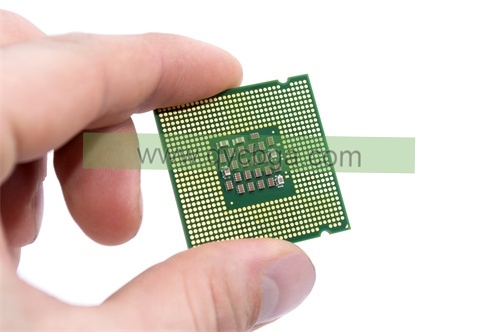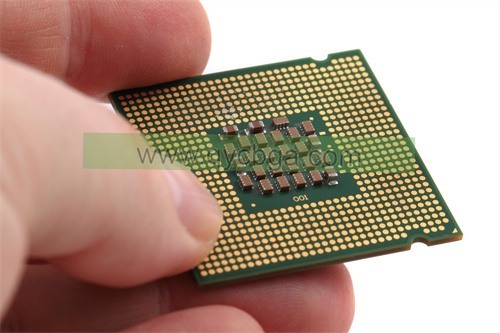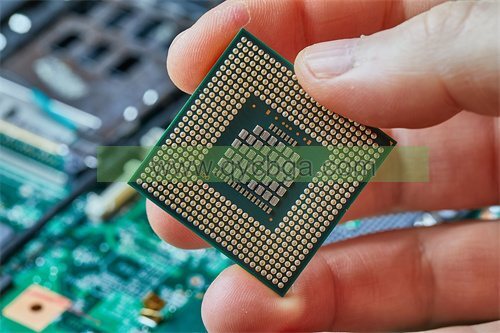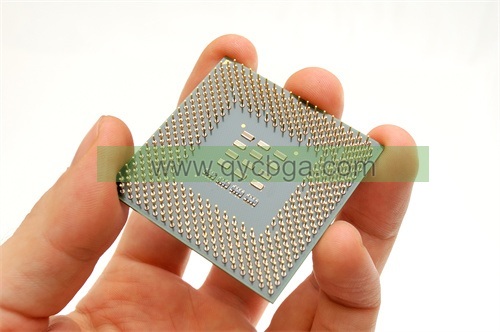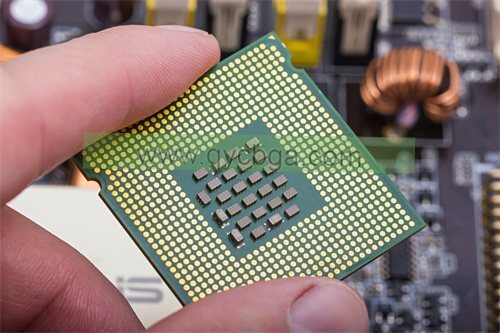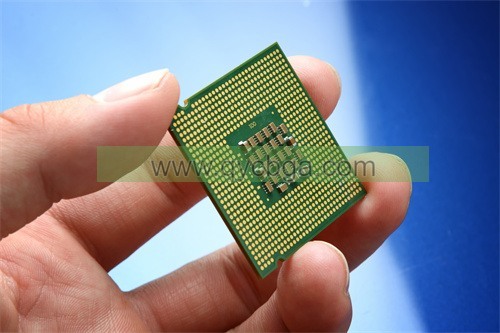What is MIS Package Substrate?
MIS 패키지 기판 제조업체,MIS (Molded Interconnect Substrate) package substrate is a sophisticated solution for compact and high-performance electronic assemblies. This substrate integrates both circuitry and mechanical structures into a single molded component, reducing the need for additional layers and connectors. MIS substrates offer excellent electrical performance, mechanical stability, 및 열 관리. They are commonly used in automotive, medical, and consumer electronics, where space-saving and reliability are crucial. Typically constructed from materials like epoxy resin or thermoplastics, MIS package substrates enable efficient manufacturing processes and facilitate the development of miniaturized and durable electronic devices, ensuring optimal performance in various applications.
MIS (Metal-Insulator-Semiconductor) package substrate refers to a type of packaging substrate used in semiconductor devices. It’s a foundational component in integrated circuits, providing a platform for mounting and connecting semiconductor chips within a package.
The MIS package substrate typically consists of several layers, including metal layers, insulating layers, and semiconductor layers. The metal layers are used for interconnections between the semiconductor devices and external circuitry. The insulating layers provide electrical isolation between different components on the substrate. The semiconductor layer, often silicon, may be used for various purposes such as device integration or additional functionality.
전반적, the MIS package substrate plays a crucial role in the performance, 신뢰도, and thermal management of semiconductor devices by providing electrical connections and structural support while insulating different components from each other.
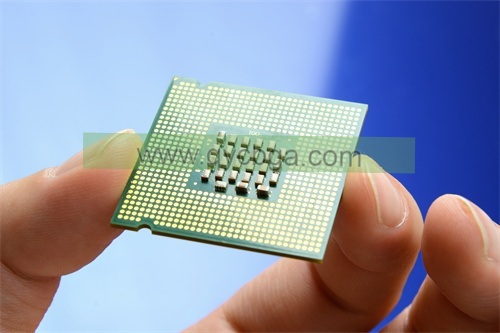
MIS 패키지 기판 제조업체
MIS Package Substrate design Reference Guide.
Designing an MIS (Metal-Insulator-Semiconductor) package substrate requires careful consideration of various factors to ensure optimal performance, 신뢰도, 및 제조 가능성. Here’s a reference guide outlining key aspects of MIS package substrate design:
- 재료 선택: Choose materials for each layer of the substrate based on their electrical, thermal, and mechanical properties. Common materials include silicon for the semiconductor layer, insulating materials like silicon dioxide or silicon nitride, and various metals for the interconnection layers.
- Layer Configuration: Determine the optimal configuration of metal, insulator, and semiconductor layers based on the specific requirements of the semiconductor device. Consider factors such as signal routing, 전력 분배, 및 열 관리.
- Interconnection Design: Design the interconnection layout to minimize signal delay, 누화, and power losses. Use techniques such as impedance matching, signal shielding, and proper ground and power distribution to optimize electrical performance.
- Signal Integrity: Perform signal integrity analysis to ensure that the substrate design meets the required electrical specifications, such as signal timing, voltage levels, and noise margins. Use simulation tools to model signal behavior and validate the design.
- Thermal Management: Incorporate features such as thermal vias, 방열판, and thermal pads to efficiently dissipate heat generated by the semiconductor devices. Ensure that the substrate design can handle the thermal load without exceeding temperature limits that could degrade device performance or reliability.
- 제조 가능성: Design the substrate with manufacturability in mind, considering factors such as layer alignment, registration accuracy, and process compatibility with fabrication techniques such as photolithography, 에칭, and deposition.
- 안정성 고려 사항: Address reliability concerns such as mechanical stress, electromigration, and thermal cycling by optimizing the substrate design and selecting appropriate materials and fabrication processes. Perform reliability testing to validate the design under various operating conditions.
- Package Integration: Coordinate the substrate design with the overall package design to ensure compatibility with assembly processes and external interfaces. Consider factors such as package size, form factor, and compatibility with standard packaging technologies.
- Documentation and Guidelines: Document the substrate design thoroughly, including specifications, layout diagrams, fabrication instructions, and design guidelines. Provide clear guidelines for manufacturing, 집회, 테스트, and quality assurance to ensure consistency and reliability in production.
- Iterative Optimization: Continuously iterate on the substrate design based on feedback from simulation, 테스트, and manufacturing experience to improve performance, 신뢰도, and cost-effectiveness over time.
By following these guidelines and best practices, you can design MIS package substrates that meet the stringent requirements of modern semiconductor devices while ensuring high performance, 신뢰도, 및 제조 가능성.
What are the materials used in MIS Package Substrate?
Materials used in MIS (Metal-Insulator-Semiconductor) package substrates are selected based on their electrical, thermal, and mechanical properties. Common materials include:
- Semiconductor Layer: Silicon is often used as the semiconductor material due to its compatibility with semiconductor fabrication processes and its excellent electrical properties.
- Insulating Layer: Insulating materials such as silicon dioxide (SiO2), silicon nitride (Si3N4), and various types of polymers are used to provide electrical isolation between different components on the substrate. These materials also offer good thermal stability and mechanical strength.
- Metal Layers: Various metals such as aluminum (Al), copper (Cu), 그리고 금 (Au) are used for interconnection layers to route electrical signals between semiconductor devices and external circuitry. These metals are chosen for their high conductivity, low resistivity, and compatibility with microfabrication processes.
- Dielectric Layer: Dielectric materials such as polyimide or benzocyclobutene (BCB) may be used as additional insulating layers or as a substrate material for multi-layer structures. These materials provide electrical insulation and mechanical support while allowing for the integration of through-silicon vias (TSVs) and other advanced packaging features.
- Passivation Layer: Passivation materials such as silicon nitride (Si3N4) or silicon oxide (SiO2) are applied to protect the underlying semiconductor devices from environmental factors such as moisture, contaminants, and mechanical damage.
- Adhesive Layer: Adhesive materials such as epoxy or polyimide are used to bond the substrate to other components of the package assembly, providing mechanical stability and ensuring reliable electrical connections.
By carefully selecting and integrating these materials, MIS package substrates can be designed to meet the demanding requirements of modern semiconductor devices, including high-speed operation, 열 관리, and reliability.
How is MIS Package Substrate manufactured?
The manufacturing process of MIS (Metal-Insulator-Semiconductor) 패키지 기판에는 여러 단계가 포함됩니다., including substrate preparation, material deposition, patterning, and assembly. 다음은 제조 공정에 대한 일반적인 개요입니다:
- 기판 준비:
– The manufacturing process typically begins with the preparation of a substrate material, such as a silicon wafer or a glass panel. The substrate is cleaned and treated to ensure surface cleanliness and uniformity.
- Material Deposition:
– Various materials are deposited onto the substrate in thin film form using techniques such as physical vapor deposition (PVD), chemical vapor deposition (증권 시세 표시기), or atomic layer deposition (ALD).
– Semiconductor layers, insulating layers, metal layers, and other functional layers are sequentially deposited onto the substrate according to the design specifications.
- Patterning:
– Photolithography is used to define patterns on the deposited layers. A photoresist material is applied to the surface, exposed to light through a photomask, and developed to selectively remove portions of the photoresist.
– The exposed areas of the underlying layers are then etched away using wet or dry etching processes, leaving behind the desired patterned features such as metal interconnects, vias, and insulation layers.
- Integration and Interconnection:
– After patterning, additional layers may be deposited and patterned as needed to build up the structure of the substrate.
– Through-silicon vias (TSVs) may be formed to provide vertical interconnections between different layers of the substrate.
– The semiconductor devices (chips) are typically attached to the substrate using bonding techniques such as flip-chip bonding or wire bonding. Adhesive materials may be used to secure the chips in place.
- Packaging and Assembly:
– Once the substrate is fully fabricated, it is integrated into the overall semiconductor package assembly.
– Additional components such as heat sinks, lids, and external connectors may be attached to the package as needed.
– The package is then sealed and encapsulated with a protective material, such as epoxy or molding compound, to provide mechanical strength and environmental protection.
- Testing and Quality Assurance:
– The finished packages undergo rigorous testing to ensure they meet the required electrical, thermal, and mechanical specifications.
– Testing may include electrical continuity testing, signal integrity testing, 열 순환, and reliability testing under various operating conditions.
By following these manufacturing steps, MIS package substrates can be produced with high precision and reliability to meet the demanding requirements of modern semiconductor devices.
The Application area of MIS Package Substrate
MIS (Metal-Insulator-Semiconductor) package substrates find application in various areas of the semiconductor industry, particularly in the assembly and packaging of integrated circuits (IC (영어)) and microelectronic devices. 몇 가지 일반적인 응용 분야는 다음과 같습니다:
- Microprocessors and Microcontrollers: MIS package substrates are widely used in the packaging of microprocessors and microcontrollers for computing devices, including desktop computers, 노트북, 서버, and embedded systems. These substrates provide electrical connections, 열 관리, and mechanical support for the semiconductor chips.
- Memory Devices: MIS package substrates are utilized in the packaging of memory devices such as dynamic random-access memory (DRAM), static random-access memory (SRAM), and flash memory. These substrates enable high-speed data transfer, compact form factors, and reliable operation of memory modules in various electronic devices.
- Graphics Processing Units (GPU): In graphics cards and other high-performance computing applications, MIS package substrates play a critical role in packaging GPUs and providing efficient thermal management for handling the high power dissipation associated with graphics processing.
- System-on-Chip (SoC) Devices: MIS package substrates are essential components in the packaging of SoC devices, which integrate multiple functions onto a single chip. These substrates enable the integration of diverse components such as processors, memory, analog circuits, and wireless communication modules into compact and power-efficient packages.
- Networking and Communication Devices: MIS package substrates are used in networking equipment, 라우터, 스위치, and communication devices to package high-speed interfaces, Ethernet controllers, wireless transceivers, and other components critical for data transmission and connectivity.
- 자동차 전자 장치: In the automotive industry, MIS package substrates are employed in the packaging of electronic control units (ECU (에큐)), sensors, actuators, and other components used in vehicle systems such as engine control, safety systems, infotainment, and driver assistance systems.
- 소비자 가전제품: MIS package substrates are found in a wide range of consumer electronics products, including smartphones, 정제, wearables, 디지털 카메라, gaming consoles, 그리고 가정용품, where they provide the necessary packaging and interconnection solutions for semiconductor devices.
- Industrial and Medical Electronics: MIS package substrates are utilized in industrial automation, 로봇공학, 의료 기기, instrumentation, and control systems, where they offer reliability, durability, and performance required for harsh operating environments and critical applications.
전반적, MIS package substrates play a crucial role in the assembly, packaging, and integration of semiconductor devices across various industries, enabling the development of advanced electronic systems with enhanced functionality, 공연, and reliability.
What are the advantages of MIS Package Substrate?
MIS (Metal-Insulator-Semiconductor) package substrates offer several advantages in the semiconductor industry, making them a preferred choice for packaging integrated circuits and microelectronic devices. 주요 이점 중 일부는 다음과 같습니다:
- 전기적 성능: MIS package substrates provide excellent electrical properties, including low parasitic capacitance, resistance, and inductance, enabling high-speed signal transmission and reduced signal degradation. This results in improved device performance and signal integrity.
- Miniaturization: MIS package substrates support the integration of multiple semiconductor devices, passive components, and interconnects into compact and densely packed packages. This enables the miniaturization of electronic systems, reducing space requirements and allowing for the development of smaller and lighter devices.
- 열 관리: MIS package substrates offer effective thermal management solutions, including the integration of thermal vias, 방열판, 및 열 패드, to dissipate heat generated by semiconductor devices. This helps in maintaining optimal operating temperatures, prolonging device lifespan, and ensuring reliable performance under high-temperature conditions.
- Reliability: MIS package substrates are designed to meet stringent reliability requirements, including mechanical robustness, thermal stability, and resistance to environmental factors such as moisture, humidity, 그리고 열 순환. This ensures the long-term reliability and durability of semiconductor devices, even in demanding applications.
- Customization and Flexibility: MIS package substrates can be customized to meet specific design requirements, including substrate materials, layer configurations, interconnection schemes, and package sizes. This flexibility allows for the development of tailored solutions optimized for various applications and performance metrics.
- 비용 효율성: MIS package substrates offer cost-effective packaging solutions compared to alternative packaging technologies such as ceramic packages or chip-scale packages. The use of standard semiconductor fabrication processes and materials helps in reducing manufacturing costs while maintaining high quality and performance.
- 호환성: MIS package substrates are compatible with a wide range of semiconductor fabrication processes, including CMOS (Complementary Metal-Oxide-Semiconductor), BiCMOS (Bipolar CMOS), and MEMS (Micro-Electro-Mechanical Systems), allowing for seamless integration with existing manufacturing workflows and technologies.
- Scalability: MIS package substrates support scalable designs that can accommodate future technology advancements, including higher device densities, increased functionality, and improved performance. This scalability enables the development of next-generation semiconductor devices and electronic systems with enhanced capabilities.
전반적, the advantages of MIS package substrates make them an attractive choice for packaging semiconductor devices, offering improved electrical performance, miniaturization, 열 관리, 신뢰도, 융통성, cost-effectiveness, compatibility, and scalability.
How Much Does MIS Package Substrate Cost?
The cost of MIS (Metal-Insulator-Semiconductor) package substrates can vary widely depending on several factors, 기판 설계의 복잡성 포함, 재료의 선택, the manufacturing process used, and the volume of production. 다음은 비용에 영향을 줄 수 있는 몇 가지 요소입니다:
- Design Complexity: 기판 설계의 복잡성, 레이어 수 포함, the density of interconnects, the presence of through-silicon vias (TSVs), and the integration of advanced features such as thermal management solutions, 비용에 영향을 미칠 수 있습니다.. More complex designs may require specialized fabrication techniques and materials, which can increase manufacturing costs.
- 재료 선택: The choice of materials for the substrate layers, including semiconductor materials, insulating materials, metal interconnects, and passivation layers, can affect the cost. Some materials may be more expensive or require specialized processing techniques, adding to the overall cost of the substrate.
- Manufacturing Process: The manufacturing process used to fabricate the substrate, including deposition, patterning, 에칭, bonding, and packaging steps, can influence the cost. Advanced fabrication techniques such as photolithography, chemical vapor deposition (증권 시세 표시기), and atomic layer deposition (ALD) may incur higher equipment and operational costs.
- 생산량: The volume of production plays a significant role in determining the cost of MIS package substrates. Higher volumes typically lead to economies of scale, as fixed costs such as equipment setup, tooling, and overhead expenses are spread out over a larger number of units, resulting in lower per-unit costs.
- 공급 업체 및 위치: The choice of supplier and manufacturing location can impact the cost of MIS package substrates. Suppliers with advanced manufacturing capabilities and lower labor or overhead costs may offer more competitive pricing.
- Additional Services: Additional services such as design support, 테스트, quality assurance, and customization may incur additional costs but can add value to the overall package.
It’s essential to consider these factors and work closely with substrate manufacturers to optimize the design and production process to achieve the desired balance between cost, 공연, and reliability for specific semiconductor applications.
FAQs about MIS Package Substrate
What is an MIS package substrate?
An MIS package substrate is a foundational component used in semiconductor packaging to mount and connect semiconductor chips within a package. It typically consists of metal, insulator, and semiconductor layers.
What are the advantages of using MIS package substrates?
MIS package substrates offer advantages such as excellent electrical performance, miniaturization, effective thermal management, 신뢰도, customization flexibility, cost-effectiveness, compatibility, and scalability.
What materials are used in MIS package substrates?
Materials commonly used in MIS package substrates include silicon for the semiconductor layer, insulating materials such as silicon dioxide or silicon nitride, various metals for interconnection layers, dielectric materials, passivation materials, and adhesive materials.
How are MIS package substrates manufactured?
The manufacturing process typically involves substrate preparation, material deposition, patterning, integration, 집회, 테스트, and quality assurance. Various fabrication techniques such as deposition, 포토리소그래피, 에칭, and bonding are used to create the substrate structure.
What are the applications of MIS package substrates?
MIS package substrates find applications in microprocessors, memory devices, 그래픽 처리 장치(Graphics Processing Units) (GPU), system-on-chip (SoC) 장치, networking and communication devices, 자동차 전자 장치, 소비자 가전제품, industrial and medical electronics, and more.
What factors influence the cost of MIS package substrates?
The cost of MIS package substrates depends on factors such as design complexity, 재료 선택, manufacturing process, 생산량, 공급 업체, location, and additional services.
How can I optimize the design and production of MIS package substrates for my specific application?
Optimizing the design and production of MIS package substrates involves considering factors such as electrical performance, 열 관리, 신뢰도, customization needs, cost constraints, and scalability requirements. Working closely with substrate manufacturers and leveraging their expertise can help achieve the desired balance between these factors.
 FCBGA 패키지 기판 제조업체
FCBGA 패키지 기판 제조업체


